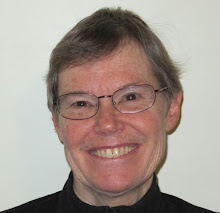Recently I found some old undated photographs of Locust Lawn, including this view of the main gate into the estate, which was located on a hill in northern Danvers. The road in the foreground was Nichols Street. By the time I was a child, only one of these gateposts stood tall; the top of the other one had fallen down, and both posts were covered by a tangle of vines. But the slope of the long lawn and the curve of the entrance look just as I remember them. The tall elm trees, too, are very familiar, though they had grown much taller and thicker by the time I first played there. What a thrill to see this old image! I instantly recognized the scene. I grew up in a little house nearby, and often walked through that entrance onto the property we called "Locust Lawn."
The estate had other names in earlier eras, long before my time: the Morse estate, the Wentworth estate (owned by Philip H. Wentworth of Boston), and prior to those owners, the Kimball estate. "In 1856, Edward D. Kimball of Salem, prominent merchant and ship owner, built on the side of 'Dale Hill' a fine residence," wrote Charles S. Tapley in his book, Country Estates of Old Danvers. "To the south were acres and acres of beautiful lawn." "The huge elm tree near the entrance gates was one of the largest in the country," wrote Mr. Tapley in the 1940's. Unfortunately, those stately elms succumbed to the Dutch Elm Disease and the hurricanes of the 1950's. After the trees fell, my sister and I played on and around the huge horizontal trunks. By then the "lawn" was more like a field or pasture. The grass grew tall, until someone mowed it with a tractor, or Mr. Hooper's cows grazed it low.
I remember walking back and forth in that pasture with my grandfather as we played an adapted form of golf. He would push a stake into the ground, and we'd try to aim our golf balls to hit that stake (sort of a hybrid game of croquet and golf). There had once been a small golf course on that estate, but no one was maintaining the greens and we couldn't find the holes. We also had to avoid stepping in cow patties. Later, my mother would bring a wheelbarrow and shovels or pitchforks for collecting that valuable fertilizer to haul home to her backyard garden.
No one lived there any more. The elegant mansion at the top of the lawn (see photo) had been bought by my grandfather's brother, Dr. John Holyoke Nichols, in 1917, but he and his wife never occupied it. I'm told Uncle John had intended to open a private sanatorium there, but WWI intervened. Speedwell School, taught by my cousin Marion Bill Nichols, used the mansion from the 1920's to 1941. After some vandalism in the 1940's, the mansion was torn down. The barn built in 1856 remained standing until the 1970's. I have many fond memories of playing in that barn and in the foundation of the old mansion, as well as skiing on the east side of the hill and playing in the woods. Locust Lawn, for me, was a wonderful playground.



No comments:
Post a Comment